
Before insurance coverage, each medical institution could set its own fees, and there were differences in costs among clinics, sometimes amounting to 200,000 or more for the same treatment.
→Insurance coverage has eliminated differences in cost between medical institutions by assigning insurance points to each treatment.
Although the timing of billing differs depending on the medical institution, 100% of the cost was billed.
→As a general rule, the burden ratio became 30% due to the insurance application.
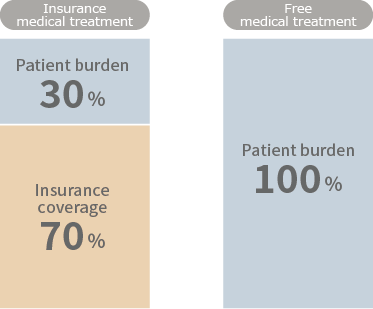
Fertility treatment was constantly advancing, with new special techniques, culture media, etc.
Until now, medical institutions have selected the technology, culture media, etc. to be used after review and verification, and have been performing special technology in the form of switching or adding options to conventional treatments.
→While techniques that have been added to insurance coverage can now be covered by insurance, those that have not been approved must be performed by free medical care.
However, because mixed treatment between free treatment and insurance is not allowed, the entire process of treatment including techniques not covered by insurance is free treatment.
There are some techniques and tests that are not covered by insurance but are recognized as advanced medical treatment, in which case treatment can be provided in the form of insurance plus advanced medical treatment.
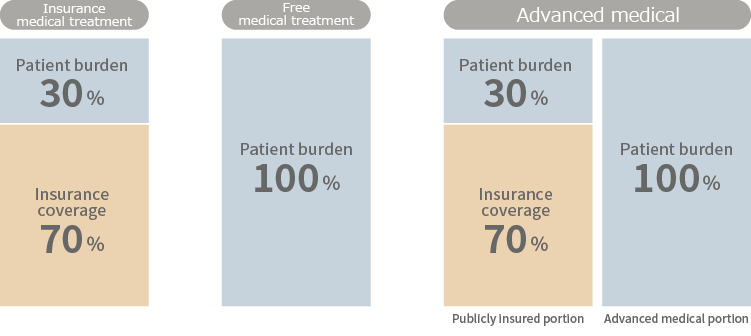
Until now, subsidies have been issued by the national and local governments, but they are scheduled to end after a grace period due to insurance coverage for infertility treatment.
→On the one hand, there are patients who will continue to receive free egg retrieval, and on the other hand, there are cases in which the out-of-pocket costs were lower before insurance coverage was applied with regard to transplantation.
(Figure 1) If used only for government subsidized projects

(Figure 2) When combined with subsidized projects from local governments

(Figure 3) Grant coverage
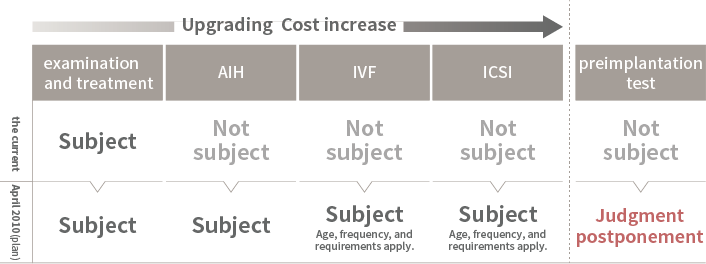
Technology that is not approved by insurance but is expected to be followed by insurance in the future can be performed as advanced medical care.
Each technology has its own indications, and if they are met, advanced medical technologies can be combined with insurance treatment.
If there is a special contract for advanced medical care with voluntary insurance, the cost may be returned.
| Types of advanced medicine | Application technology name | Advanced medical technology name | Indication | Technology overview |
|---|---|---|---|---|
| Advanced medical A | PICSI | Physiological sperm selection using hyaluronic acid | Infertility (limited to tubal infertility, male infertility, functional infertility, or patients who have failed general infertility treatment and have not had repeated implantation or pregnancy) | Technology for selecting mature sperm using a medium containing hyaluronic acid. |
| Time lapse | Fertilized egg and embryo culture by time lapse imaging method | Infertility (limited to tubal infertility, male infertility, functional infertility or when general infertility treatment is ineffective) | A technology that enables accurate evaluation of embryos without removing them from the culture medium by automatically taking pictures of the embryos during embryo culture at regular intervals using a camera built into the incubator. | |
| Intrauterine flora test (EMMA/ALICE) |
Intrauterine flora test | Suspected chronic endometritis | Tests to determine whether the flora in the uterus is normal or abnormal and the type of bacteria it contains | |
| SEET method | Endometrial stimulation | Infertility (limited to tubal infertility, male infertility, functional infertility or when general infertility treatment is ineffective) | A technology in which embryo culture medium is injected into the uterus several days before embryo transfer to create an environment suitable for the implantation of a fertilized egg. | |
| Endometrial receptivity test (ERA) |
Endometrial receptivity test | Infertility (limited to tubal infertility, male infertility, functional infertility or when general infertility treatment is ineffective) | A test that collects the endometrium and analyzes gene expression using a next-generation sequencer to assess whether the endometrial tissue is in a state suitable for implantation. | |
| Endometrial scratch | Endometrial scraping | Infertility (limited to tubal infertility, male infertility, functional infertility, or patients who have failed general infertility treatment and have not had repeated implantation or pregnancy) | A technique to scratch the endometrium (inflict local endometrium damage) in the previous cycle of embryo transfer, and to transfer the embryo in the next cycle. | |
| IMSI | Morphological sperm selection using a high-magnification microscope | Infertility (limited to tubal infertility, male infertility, functional infertility or when general infertility treatment is ineffective) | A technique for selecting mature sperm using a high-magnification microscope | |
| Two-stage embryo transfer method | Two-stage embryo transfer method | Infertility (limited to tubal infertility, male infertility, functional infertility, or patients who have failed general infertility treatment and have not had repeated implantation or pregnancy(Only those in which endometrial stimulation was performed.)) | Technology in which an early embryo is transferred ahead of time and another blastocyst is transferred at a later date after continuous culture. |
*Status of advanced medical care in infertility treatment (as of May 1, 2020)
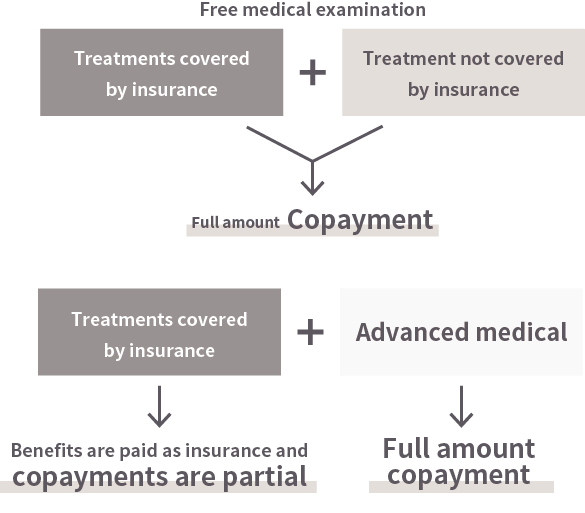
*Overview of advanced medical care (from the ministry of health, labor and welfare)
Even if it is covered by insurance, the self-pay amount exceeds ¥100,000, which is not a cheap amount.
A high-cost medical care reimbursement system is available for treatment.
Please pay once at the hospital counter and apply for a refund yourself, or apply for a "certificate" (certificate of application of the maximum amount) to your health insurance association before you start treatment.
If you submit the certificate to our office, the payment at the office will be kept at a fixed amount.
However, please inquire with the insurance association on your own since the claim must be made within the same month and the limit amount varies depending on annual income.
*To all users of the high-cost medical care benefit system (from the ministry of health, labor and welfare)
Please refer to the page below for detailed explanations about the high-cost medical care benefit system and the issuance of a ceiling application certificate.
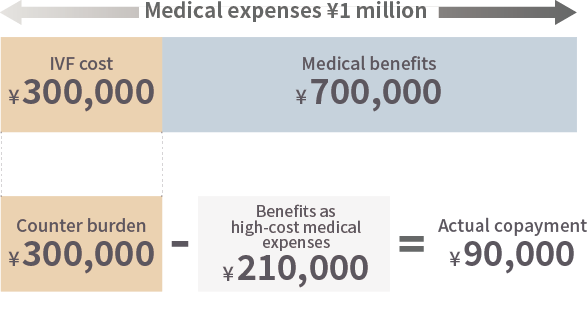
| Monthly remuneration | Maximum copayment amount | |
|---|---|---|
| Principle (-3 months) | Multiple use(4 months-) | |
| Low-income earner (Municipal tax exemption) |
¥35,400 | ¥24,600 |
| ~¥269,999 | ¥57,600 | ¥44,400 |
| ¥270,000~¥514,999 | ¥80,100 +(Medical expenses - ¥267,000)×1% |
¥44,400 |
| ¥515,000~¥819,999 | ¥167,400 +(Medical expenses - ¥558,000)×1% |
¥93,000 |
| ¥820,000~ | ¥252,600 +(Medical expenses - ¥842,000)×1% |
¥140,100 |